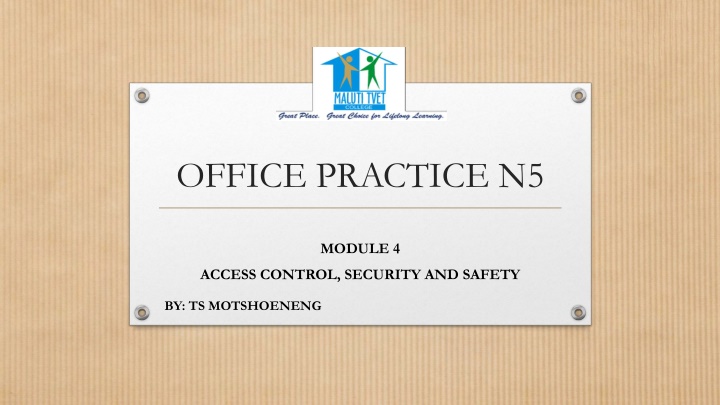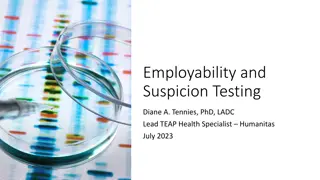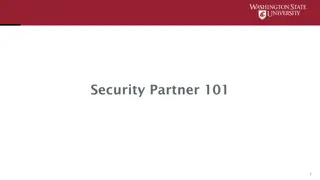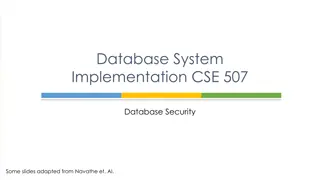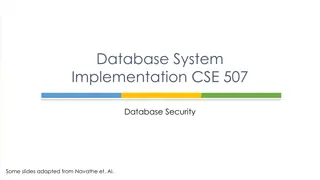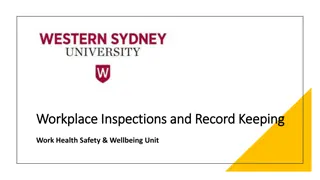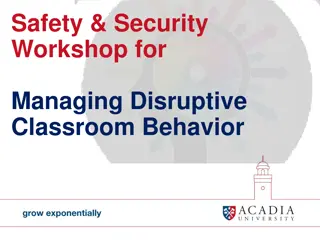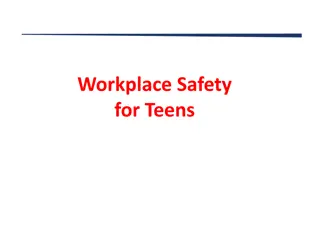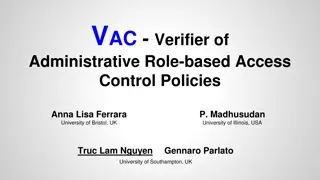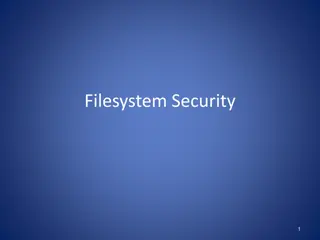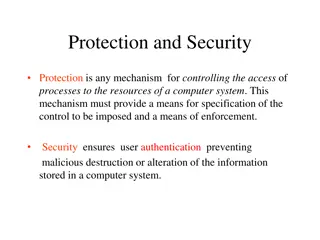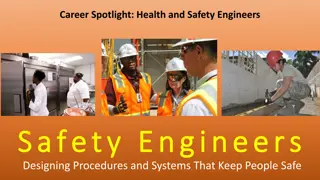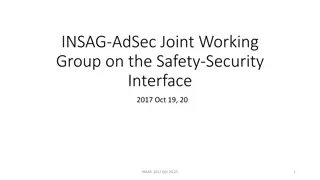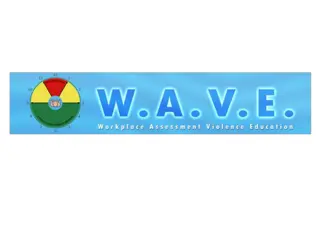Enhancing Access Control, Security, and Safety in the Workplace
Effective access control measures are crucial for safeguarding business premises and assets. This includes physical and information security to protect staff and resources. Implementing policies, procedural manuals, and security clearance checks are essential to prevent espionage and ensure a safe working environment. Utilizing identification and access cards can enhance security and monitor movements within the organization.
Download Presentation

Please find below an Image/Link to download the presentation.
The content on the website is provided AS IS for your information and personal use only. It may not be sold, licensed, or shared on other websites without obtaining consent from the author.If you encounter any issues during the download, it is possible that the publisher has removed the file from their server.
You are allowed to download the files provided on this website for personal or commercial use, subject to the condition that they are used lawfully. All files are the property of their respective owners.
The content on the website is provided AS IS for your information and personal use only. It may not be sold, licensed, or shared on other websites without obtaining consent from the author.
E N D
Presentation Transcript
OFFICE PRACTICE N5 MODULE 4 ACCESS CONTROL, SECURITY AND SAFETY BY: TS MOTSHOENENG
ACCESS CONTROL, SECURITY AND SAFETY Access control is vital to the security of a business premises and its assets - human and material. Because technology is now an integral part of everyday life, access control now also includes information security and not only physical access control. It is as important to safeguard access to information on computers as it is to ensure the safety of staff and other assets. Policies differ between businesses but their common aim is to create parameters that determine who, where and how access will be allowed.
PRECEDURAL MANUAL FOR ACCESS CONTROL,SECURITY AND SAFETY The following are few aspects that needs to be included on the manual: Occupational Health and Safety Act Staff members and supervisors responsible for OHS An awareness of health, safety and security risk Regular staff training including First Aid Protection of staff, physical assets and information
PRINCIPLES OF ESPIONAGE What is Industrial Espionage: It can be described as a careful procurement, through illegal or corrupt means. It is the act of obtaining secrete or confidential information or divulging of the same without the permission of the holder of the information. The following are the principles to prevent espionage: Develop a policy for ethical business practice. Determine who will be allowed access to the buildings and sensitive information. Do not employ temporary staff unless background check is done Do regular office sweeps to check for listening devices Be very care when supplying information to people
SECURITY CLEARANCE OF STAFF The purpose of security clearance check is to determine if a person has been involved in any illegal or criminal activities that may have resulted in them having a criminal record. Principles of Security Clearance: Security clearance can be obtained for all new employees to determine if they are clear from the criminal activities. Obtain staff members finger prints and keep the record. Require new staff to obtain their behaviour certificates from previous employer and schools Alcohol and drug test can be done regularly as part of security clearance Polygraph examination can also be done in extreme cases, to determine the staff truthfulness
THE USE OF IDENTIFICATION AND ACCESS CARDS The access control is very important in the organisation to ensure the safety and security of organisation and its assets. The purpose of the cards is to monitor the movements in and out of the organisation. The following should be taken into consideration when the card is designed: The quality of printing Quantity Use of layout and colour Technology used Levels of restrictions NB: There are two types of access cards employees card and visitor s card. The difference between the two cards is: Visitor s card will only display the logo of the company with all contact details, with the name visitor written on the card, and employees card will include personal details of each employee, company logo and employee number .
DEALING WITH OUTSIDE VISITORS Outside visitors will mainly be clients, customers and interested people on the organisation, so the company should make sure that the security measures are put in place to protect the company and its assets. VISITOR S REGISTER: The register will always be at the entrance with the security to ensure the proper control of who enters and who leave the organisation. If in case the company does not have the security the entrance, then the Management Assistant for the company will be in charge of the register. Example of the Register: Card No. Name & Surname Contact No. Car Person to Visit Reason for visit Time In Time Out Signature registration
RESPONSIBILITES OF THE PERSON IN CHARGE WITH THE REGISTER The person in charge of the register must: Provide a safe environment for employees by being consistently through regarding the use of the visitor. Be approachable and friendly Be reliable Manage the register with integrity Keep management informed on potential risk.
TYPES OF SCANNING EQUIPMENTS: The are different scanning equipment that are use by different organisation to ensure that the access control is fully monitored. Examples: Code base access system Proximity access control Biometric access control Electronic locking devices Combination locks
SECURITY CONCERNING MANAGEMENT ASSISTANT S DESK The company should implement the policy with regard to the management assistant desk or workstation, to prevent confidential information or documents being viewed or seen by wrong people and the OHS Act should also be considered on how long should the company keep its documents. The confidential information or documents are not intended for disclosure to the public and this can include company s marketing plans, personal details of employees, financial information documents, and the documents should always be marked as confidential or restricted . The management assistant should at all times ensure that the documents are not let unattended on the desk and documents that are no longer in use, are shredded. In case if the management assistant is absent from the desk, he/she need to make sure that documents are locked away in the cabinet and ensure that the computer password is installed to safeguard the information of the company.
UNSAFE ACTIONS AND UNSAFE CONDITIONS Unsafe Actions: These are actions that people might take and can lead to unsafe situation that can harm other people. Poor handling of stationery Misuse of chairs Wrong or quick movements Negligence when using filing cabinets Walking whilst holding sharp objects Unsafe Conditions: These may refer to conditions created by the layout of the office such as placement of furniture Boxes stacked against the wall High gloss tiles Loose carpets Poor ventilation Electric cable that are not properly cables
DIFFICULT SITUATIONS We have different difficult situations that the company should prepare for in advance. The management assistant should always be ready and be able to assist have the contact details for all the emergency centres in case of unforeseen circumstances. Emergency include: Fire Bomb threat Armed robbery Hostage situation In case of these emergencies, the company should train staff for First Aid, that will help during the emergencies, and they need prepare thoroughly for these situations before, during and after the incident.
